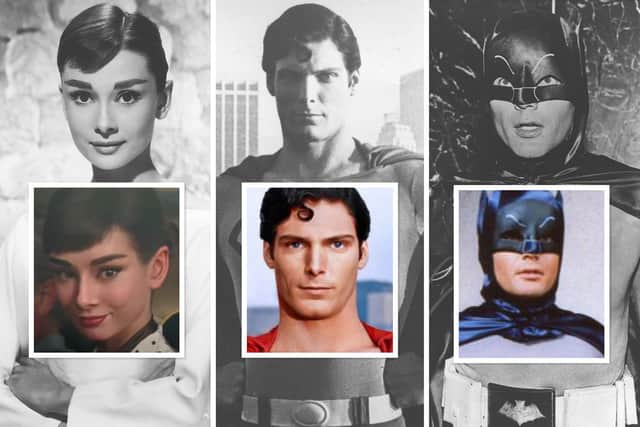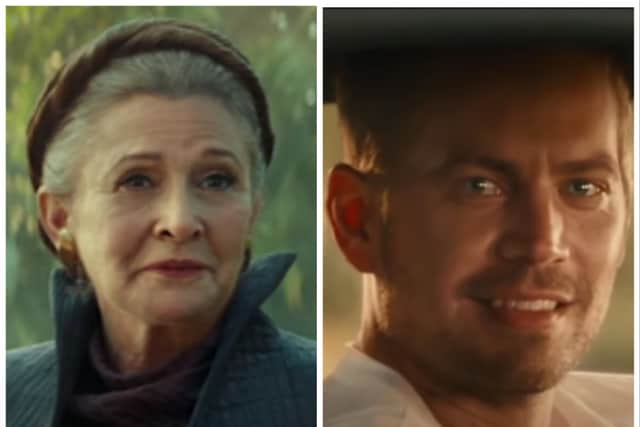The Flash Christopher Reeve cameo: does casting dead actors in films using CGI take Hollywood magic too far?
and live on Freeview channel 276
Is it a bird? Is it a plane? No, it’s the shamelessly reanimated likeness of esteemed Superman actor Christopher Reeve for the new Flash movie.
Christopher Reeve is (almost) the original Superman, and for many fans, he’s still the best. The actor starred in four Superman movies in the 1970s and ‘80s, but his acting career was abruptly impacted by a horse riding accident in 1995 which left him paralysed.
Advertisement
Hide AdAdvertisement
Hide AdReeve died of heart failure in 2004, aged 52, but this year he once again featured in a blockbuster superhero movie. That’s right, thanks to the magic of CGI, Reeve was dragged back to life as Clark Kent for a brief cameo in The Flash.
Adam West, the original Batman actor who died in 2017, also joins the character’s current portrayer, Ben Affleck in the film.
Additionally George Reeves, the real original Superman, who played the character in the 1951 film Superman and the Mole-Men, and The Adventures of Superman TV series, also appears in The Flash. This, despite the fact that he died more than 60 years ago.
This plethora of passed-on performers has once again raised the debate over the use of a dead actor’s likeness by film studios in the pursuit of a box office boom.


Is it right to use the likenesses of dead actors in new films?
Advertisement
Hide AdAdvertisement
Hide AdInstinctively, it feels wrong to reanimate a long-dead actor in the name of fan service and ticket sales, rather than letting the star rest in peace. And that is, ultimately, why DC has done this.
But what makes the move even more ‘icky’ is that Reeve had previously vetoed playing the Man of Steel after Superman IV: The Quest for Peace, which wasn’t exactly film of the year.
Yet, Reeve’s estate is believed to have signed off on the use of his likeness for the film, and will have received a fee for doing so. But is that enough to wash the dirty project? In the case of George Reeves, who had no children and whose ex-wife wife died in 2002, it is likely that no-one has a claim to his likeness, and any who did probably wouldn’t have known the man well anyway.
So who’s to say if George would have been happy with his face being used to sell cinema tickets for a film that he could not have even conceived of when he was alive. Apparently, the film studios have this right. DC Studios is far from the only offender, though its hat-trick of croaked cameos is glaring in its level of exploitation.


Advertisement
Hide AdAdvertisement
Hide AdPaul Walker and Carrie Fisher were posthumously CGI’d into the Fast and Furious and Star Wars franchises respectively, though these were more delicately done and were clearly more of a tribute to the stars than a cameo. And given that they were both due to appear in these films before their untimely death, it’s harder to argue that their inclusion would conflict with the actors’ wishes.
Then there’s the cases of Peter Cushing appearing in Rogue One, 22 years after he died, or one of the most respected stars of stage and screen, Laurence Olivier, being spliced into sci-fi flop Sky Captain and the World of Tomorrow, 15 years after being laid to rest. And, even more uncomfortably, Audrey Hepburn was resurrected after more than two decades in 2014 for, of all things, a chocolate advert.
With the onward march of CGI and artificial intelligence, it’s likely that this trend to de-age old actors and reconstruct them after death, will only grow. There are obvious consequences to this - new actors will struggle to get a foot in the door. If you’re shooting a new gangster epic, why hire for an up and coming actor when you can simply buy the rights to a young Marlon Brando. John Wayne hasn’t shot a movie since 1976, but his death may not be enough to stop studios from co-opting him for their latest western adventure.
What 10 years ago may have sounded like an interesting concept for a Black Mirror episode, is now becomingly worryingly in vogue. Soon we’ll come full circle. 10 years from now, if Robert De Niro has shuffled off this mortal coil, he could be digitally resurrected to reprise his role as Frankenstein’s monster, which would be both very meta, and rather depressing.
Comment Guidelines
National World encourages reader discussion on our stories. User feedback, insights and back-and-forth exchanges add a rich layer of context to reporting. Please review our Community Guidelines before commenting.
